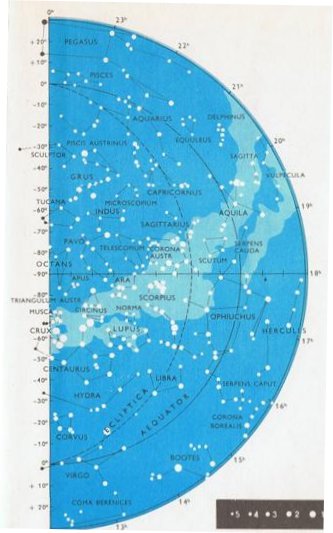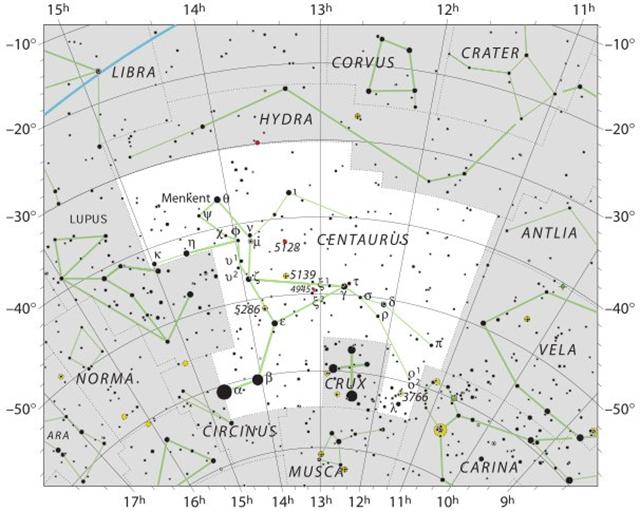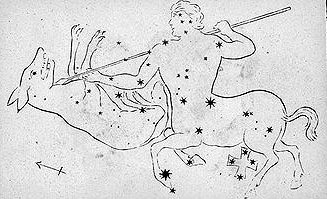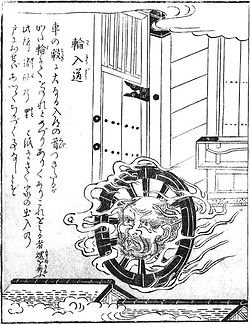7. The path of Sun (the ecliptic) is below the equator of the sky during half the year, beginning at Virgo and ending at the square of Pegasus:
The position of Crux and the Coalsack Nebula (the head of the Emu), far down in the south, could suggest a causal connection with the path of Sun going down. The 13th hour (an unlucky number) contains also the hind quarter of the Centaur:
Denebola, the tail of the Lion, or of 'life' (deneb-ola), indicates where the ecliptic is about to descend into the Underworld:
The γ star of Centaurus coincides with Porrima (γ Virginis'):
Vero perhaps could be interpreted as the spear which kills Sun (there is no head, only a head-gear in Ga5-15). On the other hand, it could alternatively (and better) be imagined as the spear with which the benevolent Centaurus transfixes the 'Wolf':
According to Manuscript E the planter returns in the form of Nga Tavake already in September 1, perhaps following a rule which says birth must precede death. For the young one to thrive, though, it is difficult to remain in the shadow of the 'Old Tree' (cfr the story of Ulu and Mokuola). The distance to Agena (β Centauri at 14h 00m) is 49 days.
 The Red-tailed Tropicbird, Phaethon rubricauda, is a plunge-diver. Phaethon was the mythical figure who plunged into the 'sea' (cfr The Weak One): ... And there is little doubt, in fact none, that Phaethon (in the strange transformation scenes of successive ages) came to be understood as Saturn. There is the testimony of Erastosthenes' Catasterisms, according to which the planet Saturn was Phaethon who fell from the chariot into Eridanus, and Stephanus of Byzantium calls Phaethon a Titan ... I suggest this is the same phase of Sun's journey as that which yearly was celebrated at Stromberg (cfr at Te Pei): ... Each household in the village was constrained to contribute a shock of straw to the nearby high place, Stromberg, where the males went at evening while the females went to a spring lower down on the slope. A huge wheel was wrapped with this straw. An axle run through the wheel served as the handles for those who were to guide it on its downward plunge. The mayor of a nearby town kindled the straw, for which office he was rewarded with a basketful of cherries. All the men kindled torches and some followed the burning orb as it was released downhill to shouts of joy. The women at the spring echoed these shouts as the wheel rushed by them. Often the fire went out of its own accord before it reached the river, but should the waters of the river extinguish it, an abundant vintage was forecast for that year ... We can add a similar figure from the folklore of Japan:
"Wanyūdō ['Wheel Monk'] is said to take the form of a burning oxcart wheel bearing the tormented face of a man. Various folklore purports him as the condemned soul of a tyrant daimyo who, in life, was known for having his victims drawn on the back of an oxcart. He is said to guard the gates of Hell and to wander back and forth along the road between this world and the underworld, scaring townsfolk as he passes and stealing the souls of anyone who gets too close in order to bring them to Hell with him." (Wikipedia) |














